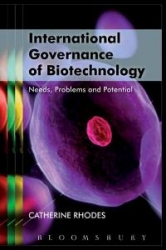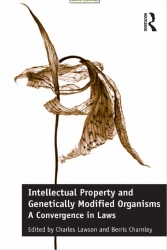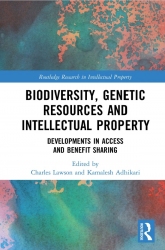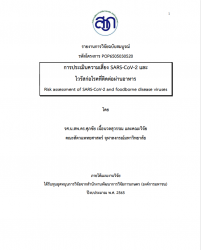
Author : Alex Baumber
Publishing Date : Feb 22, 2016
The growing of crops for bioenergy has been subject to much recent criticism, as taking away land which could be used for food production or biodiversity conservation. This book challenges some commonly-held ideas about biofuels, bioenergy and energy cropping, particularly that energy crops pose an inherent threat to ecosystems, which must be mitigated.
The book recognises that certain energy crops (e.g. oil palm for biodiesel) have generated sustainability concerns, but also asks the question "is there a better way?" of using energy crops to strategically enhance ecosystem functions. It draws on numerous case studies, including where energy crops have had negative outcomes as well as well as cases where energy crops have produced benefits for ecosystem health, such as soil and water protection from the cropping of willow and poplar in Europe and the use of mallee eucalypts to fight salinity in Western Australia. While exploring this central argument, the volume also provides a systematic overview of the socio-economic sustainability issues surrounding bioenergy.

Author : Catherine Rhodes
Publishing Date : Apr 29, 2014
The significant media coverage recently given to issues such as the international impacts of biofuel production policies, advances in synthetic biology, and the ethical implications of research involving embryonic stem cells, is indicative of the high-level of interest - among policy-makers, academics and the public - in the biotechnology revolution, its applications, impacts and control. There is also significant interest in international regulatory processes as a form of governance, and international regulation is a vital part of efforts to manage the impacts of the biotechnology revolution, since many of these are global in their nature. The book establishes the need for international regulation of biotechnology, identifying the roles it needs to play, and the issues it needs to cover. Having outlined the importance of coherence to the effective functioning of international regulatory sets, a model of coherent international regulation is established, against which the biotechnology regulations can be assessed. This book approaches the subject from an international relations perspective but also draws from, and will contribute to, literature in the fields of international law, global governance, technological governance, and science-society relations.

Author : Charles Lawson, Berris Charnley
Publishing Date : Mar 09, 2016
Taking a global viewpoint, this volume addresses issues arising from recent developments in the enduring and topical debates over Genetically Modified Organisms (GMOs) and their relationship to Intellectual Property (IP). The work examines changing responses to the growing acceptance and prevalence of GMOs. Drawing together perspectives from several of the leading international scholars in this area, the contributions seek to break away from analysis of safety and regulation and examine the diversity of ways the law and GMOs have become entangled. This collection presents the start of a much broader engagement with GMOs and law. As GMO technology becomes increasingly more complex and embedded in our lives, this volume will be a useful resource in leading further discussion and debate about GMOs in academia, in government and among those working on future polic

Author : Correa, Carlos M., Hilty, Reto M.
Publishing Date : Mar 20, 2023
This open access book is the outcome of a Global Forum on Innovation, Intellectual Property and Access to Medicines held in December 2019 at the Max Plank Instititute in Munich, organised by the South Centre and the Max Plank Institute. The academics and experts from international organisations participating have contributed chapters to this book. The book is for policy makers (in Ministries of Health, Ministries of Trade, Ministries of Foreign Affairs, patent offices), but also relevant for academics (law, trade, public health), on the flexibilities available in the Agreement on Trade Related Aspects of Intellectual Property Rights (TRIPS) of the World Trade Organization to promote access to medicines.

Author : Donal O'Connell
Publishing Date : Apr 15, 2016
A fundamental change in the way organisations approach innovation is taking place. It is driven by the simple realisation that not all the smart people work for just one organisation. Few intellectual property books concentrate on external innovation and more particularly on dealing with external inventors and handling their inventions. Harvesting External Innovation begins by examining the broad subject of innovation, stressing the need to understand its forms and phases, ways and means to encourage innovation. It then addresses the growing phenomenon of external innovation. A number of different approaches to engaging with the external innovator community are then considered, together with real life case studies. Harvesting External Innovation discusses in depth how best to handle intellectual property matters, how to actually work with these external inventors and how to handle their inventions, including a suggested process and check list.

Author : Iain Brassington
Publishing Date : Apr 30, 2014
Education in West Central Asia is a comprehensive critical reference guide to education in the region. With chapters written by an international team of leading regional education experts, the book explores the education systems of each country in the region. With chapters covering Iran, Pakistan, Afghanistan, Kazakhstan, Kyrgyzstan, Tajikistan, Turkmenistan and Uzbekistan, the book critically examines the development of education provision in each country as well as local and global contexts. Including a comparative introduction to the issues facing education in the region as a whole and guides to available online datasets, this handbook will be an essential reference for researchers, scholars, international agencies and policy-makers at all levels.

- Biodiversity, Genetic Resources and Intellectual Property Developments in Access and Benefit Sharing
Author : Kamalesh Adhikari, Charles Lawson
Publishing Date : May 04, 2020
Debates about Access and Benefit Sharing (ABS) have moved on in recent years. An initial focus on the legal obligations established by international agreements like the United Nations Convention on Biological Diversity and the form of obligations for collecting physical biological materials have now moved to a far more complex series of disputes and challenges about the ways ABS should be implemented and enforced: repatriation of resources, technology transfer, traditional knowledge and cultural expressions; open access to information and knowledge, naming conventions, farmers’ rights, new schemes for accessing pandemic viruses and sharing DNA sequences, and so on. Unfortunately, most of this debate is now crystallised into apparently intractable discussions such as implementing the certificates of origin, recognising traditional knowledge and traditional cultural expression as a form of intellectual property, and sovereignty for Indigenous peoples. Not everything in this new marketplace of ABS has been created de novo. Like most new entrants, ABS has disrupted existing legal and governance arrangements. This collection of chapters examines what is new, what has been changed, and what might be changed in response to the growing acceptance and prevalence of ABS of genetic resources.
Biodiversity, Genetic Resources and Intellectual Property: Developments in Access and Benefit Sharing of Genetic Resources addresses current issues arising from recent developments in the enduring and topical debates about managing genetic resources through the ABS regime. The book explores key historical, doctrinal, and theoretical issues in the field, at the same time developing new ideas and perspectives around ABS. It shows the latest state of knowledge and will be of interest to researchers, academics, policymakers, and students in the fields of intellectual property, governance, biodiversity and conservation, sustainable development, and agriculture.

Author : Maureen O'Sullivan
Publishing Date : Jun 19, 2019
This book critiques the decision-making process in Article 53(a) of the European Patent Convention. To date, such decisions have been taken at high levels of expertise without much public involvement. The book eschews traditional solutions, such as those found within legislative, judicial and patent office realms and instead develops a radical blueprint for how these decisions can be put to the public. By examining wide-scale models of participatory democracy and deliberation, this book fills a significant gap in the literature. It will be invaluable for patent lawyers, academics, practitioners and intellectual property and patent officials.
123NextLast



